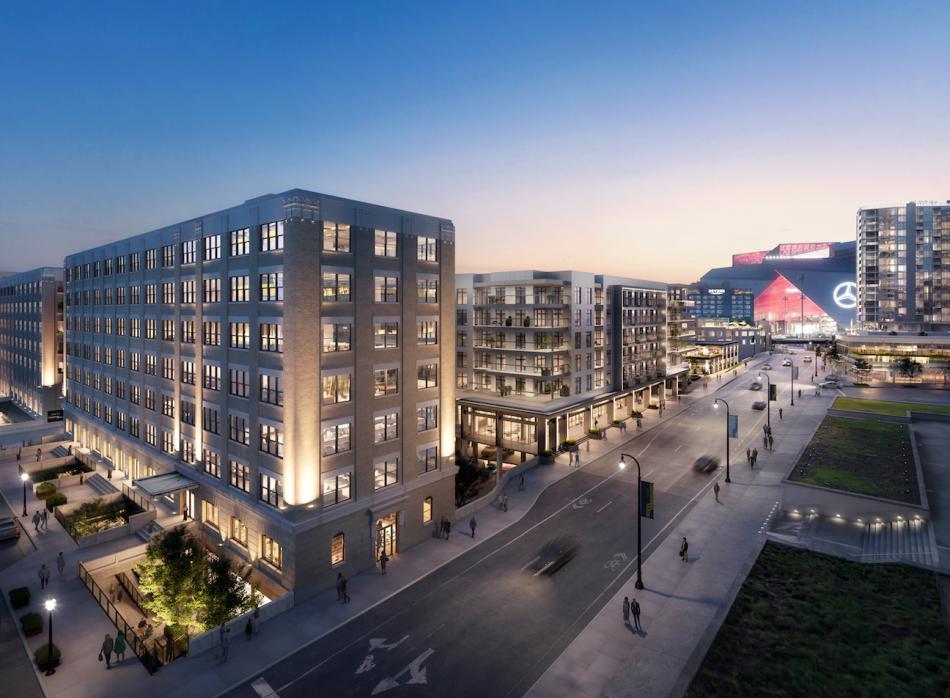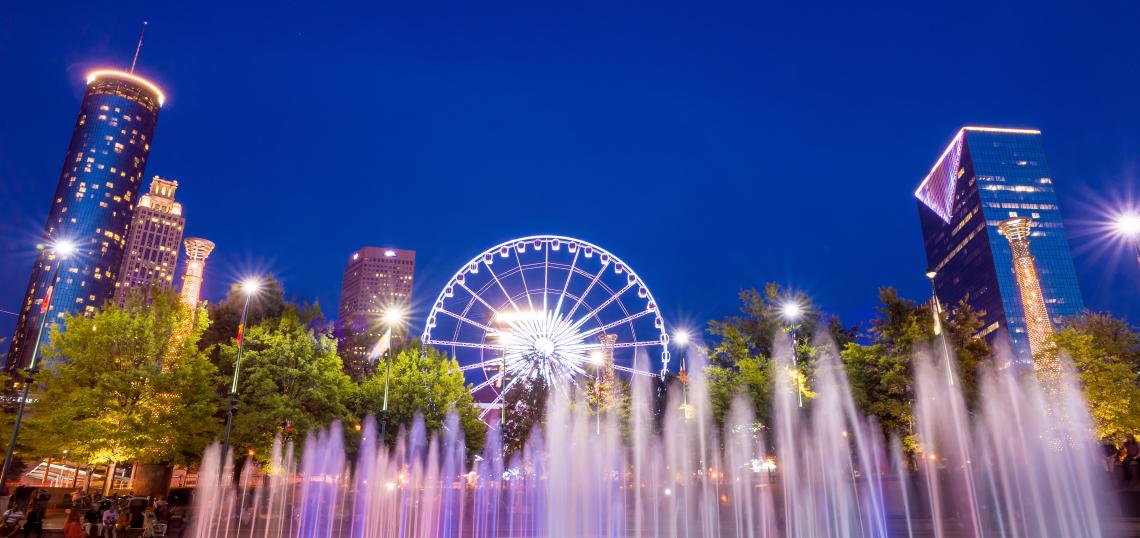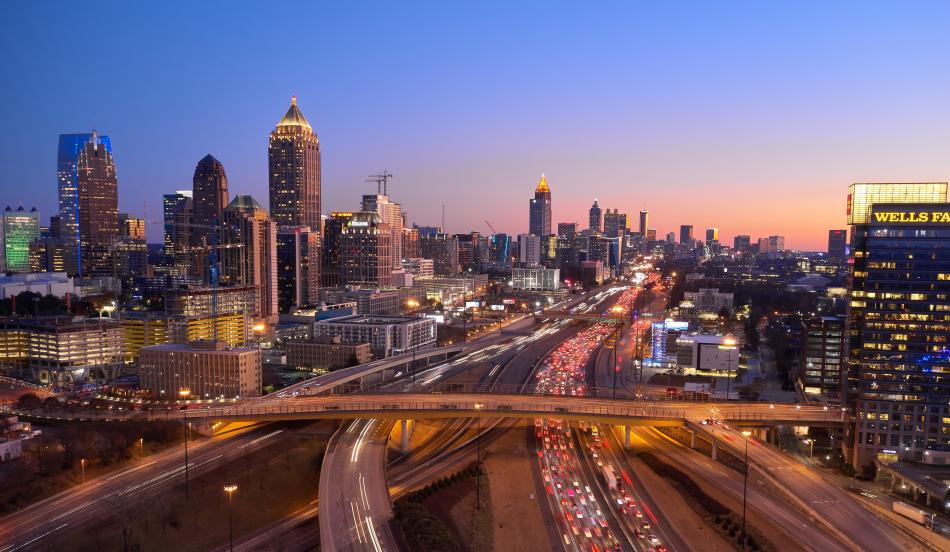When news broke in 2022 that Atlanta would join 10 peer U.S. cities in hosting World Cup matches in 2026, Adam Hazell understood immediately what’s at stake.
Hazell, a Georgia Tech graduate and city and regional planner since the mid-1990s, saw firsthand what happened the last time the world descended upon Atlanta—a turning point in the city’s history that, for all its attributes, was famously flawed.
In the following editorial, originally published in summer 2022, Hazell shares thoughts on how Atlanta can learn from 1996 and craft a visitor experience that exalts the city’s status on the world stage.
...
Atlanta has long been a convention and conference hub, capable of hosting major events at the Georgia World Congress Center and adjoining sports arenas with a rather cold efficiency.
The ability for visitors to fly into a premier international airport, take the rail into downtown, walk or MARTA from their hotel to their event, and then depart with ease has been a cornerstone of Atlanta’s business reputation since the 1980s. The facilities and infrastructure behind this industry enabled Atlanta to land multiple major sporting events, including the summer Olympic Games more than 25 years ago.
But that same cold efficiency has also dampened Atlanta’s international image.
A poster child for suburban sprawl, the Atlanta of 1996 was hardly a national destination for cultural or urban tourism, let alone an international one. Downtown and Midtown were largely shuttered by 6 p.m., traffic was horrendous, alternate transportation limited, and what few tourist attractions to be had were strewn about in disparate locales.
As a result, Olympics-era visitors recalled spirited settings for the actual Games but considered Atlanta as a whole bland and disappointing, generally speaking. Compared to the roster of past Olympic hosts, almost all of which were major international cultural destinations even without the Olympics, Atlanta was a glorified office park.
But make no mistake: Atlanta’s World Cup ’26 role gives the city’s international reputation a shot at redemption.
Obviously, a great deal has changed since ’96, much of it inspired in response to the post-Olympic criticism received by the city. Efforts to improve pedestrian accessibility, create vibrant neighborhoods, and foster bona fide international attractions has given Atlanta a stronger sense of self. But much work remains if Atlanta wants to be considered a hub for cultural tourism, a void which projects such as Centennial Yards and the BeltLine (the Eastside Trail in particular, for now) are striving to help fill with their burgeoning entertainment districts.
Let's face it: Even locals will too often say they travel elsewhere for fun, often citing Nashville and New Orleans as urban centers with more lively scenes than Atlanta. Such opinions (and spending patterns) matter, not just with an eye toward 2026, but also regarding Atlanta's continuing quest to lure—and keep—businesses and talented labor.
After all, people want to live and work in inspiring places. They want a hometown they can be proud of now, instead of dreaming about its potential.
Blessedly, various forces are working to make such things a reality, and hopefully in time the incremental progress (think: Westside investment and the rebirth of South Downtown) will give Atlanta the equity needed to take a leap on even bolder visions like the Midtown Connector. But the opening matches for 2026 are less than four years away, so barring a last-minute endowment spree by local billionaires, it’s unlikely any of the boldest plans for Atlanta have a chance to see life by the World Cup.
If anything, it’s with the understanding that grand schemes are unlikely at this time that Atlanta should think critically now about how we want to look and feel once the world arrives at Hartsfield-Jackson International Airport.
So, keeping in mind what’s practical and might yield the biggest impact, here’s what the city, MARTA, and other powerful entities should do before the first globally watched match kicks off:
• First, affirm the City of Atlanta’s goals for the event:
Talk with business and tourism leaders, especially those familiar with stories from 1996, and make a point to not repeat mistakes; find areas in which you can improve, and be savvy in identifying the elements that can and should be controlled, when the time comes. Use this to make a list of all the ways Atlanta can proactively improve the visitor experience and let that be your ultimate guide.
• Complete MARTA station clean-ups and, if possible, the Five Points renovation.
The rail network is one of Atlanta’s few advantages over many other peer cities, but this only matters if it’s effectively used. The network won’t be expanded ahead of 2026, but as most events will be in town anyway, that won’t be the priority. What matters is taking the existing service to the next level. Everything that can be done to make our transit system cleaner, more navigable, and more user-friendly will go a long way toward endearing visitors to trusting and using the system. Start by optimizing Five Points station, if not making it a destination of its own.
• Be prepared to fast track downtown and Midtown development.
A conservative estimate already dropped on one newscast suggests Centennial Yards hopes to be 50 to 60 percent complete by spring ’26. Projections for South Downtown and Underground Atlanta are even more conservative. Since all developers will only move as fast as their finances, contractors, and interests allow, the city should ensure it doesn’t get in the way and inadvertently hinder progress. However, also work with the developers to minimize the chaos of a construction scene during the World Cup.
• Try to complete Centennial Yards' infrastructure.
Even if some buildings aren’t in place, it would go a long way to making a vital entertainment district if the street grid was complete and the district was less of a sadly dystopian landscape. This would also greatly assist mobility during the event.
 At left, the below-grade retail "Canyon" and Centennial Yards loft office building that are under construction now, where Norfolk Southern left its offices in the 1990s. Courtesy of Centennial Yards, via DBOX
At left, the below-grade retail "Canyon" and Centennial Yards loft office building that are under construction now, where Norfolk Southern left its offices in the 1990s. Courtesy of Centennial Yards, via DBOX
• Have plans for vacant and unoccupied lots throughout downtown.
Ideally, all vacant buildings should be at least cleaned up and made safe, and vacant lots could be made available on a temporary basis for exhibitor spaces or pocket parks. Work with developers to ensure these aren’t eyesores with potential for crime, litter, etc.
• Upgraded pedestrian connectivity and streetscaping.
The goal should be that everything from the Grady Curve to Mercedes-Benz Stadium is eminently walkable, attractive, and rendered in a way that helps visitors navigate between destinations. This includes upgrading sidewalks, signage, litter control, art, and more. The streets shouldn’t just be functional for pedestrians, but in some places they should in fact be destinations. If you can’t improve every block, focus on where people will go—and where you want them to go.
• Find opportunities for event signage and public art.
Make the event more interactive for all by having stations and pocket parks all over Atlanta that celebrate the event, local history, and local culture. Create a series of mini-destinations featuring sculpture and poetry by local artists, news about the World Cup, and/or facts about our city.
• Have a plan to manage scooters and rental bikes.
A comprehensive network of dedicated routes for pedestrian devices would be great but is unlikely by ’26, so develop and implement a plan that better eliminates stray devices and minimizes conflicts on roads and sidewalks.
• Help local entities create pop-up attractions.
You know there will be street vendors and temporary marketplaces. And you know visitors are looking for things to do. So use the setting to create a SXSW-style variety of experiences from the various businesses and institutions wanting to sell themselves and Atlanta. Think of an ad-hoc Epcot of Atlanta, with a Delta flight simulator, Porsche driving experience, a Georgia Tech science lab, and more, all clustered in a setting that provides a sampling of what makes the metro special.
• Improve the connection between International Plaza and the Home Depot Backyard.
These spaces will always be integral to events at the Benz and/or the GWCC. Done right, they could blend more seamlessly with an ornamental staircase, landscaping, sculpture, a waterfall, or other shared element. Ideally, something should be created that visually draws eyes toward the convergence of the spaces, making them feel like one larger park instead of two distinct spaces. This would also be a great opportunity to erect a monument to the Cup, something comparable to the Olympic cauldron, but in a more appealing location.
• Lastly, please prep the folks on the front lines.
Many of these improvements won’t matter as much if Atlanta proves unfriendly and unprepared to help visitors. Ideally, local officials, law enforcement, and ambassadors will be welcoming and able to serve (see: Atlanta's most recent Super Bowl), but 2026 will present a unique set of circumstances. Hopefully, the city will have plans in place that make the visiting experience as smooth as sweet tea.
Most of these suggestions are likely on the city’s radar, and they’re what Atlanta wants to do/be regardless of the World Cup. Hopefully, they're eminently practical and within local budgets.
Atlanta may not be the sexiest or most adventurous destination (yet), but we can learn from 1996 and better position ourselves to succeed in every way for a World Cup three decades later, even if the entirety of downtown and beyond, as always, remains a work in progress.
Adam Hazell, AICP, is a graduate of Georgia Tech, has practiced city and regional planning in Georgia since 1996, and can usually be found in the front row of the supporters' end for Atlanta United home matches.
• Recent downtown news, discussion (Urbanize Atlanta)









